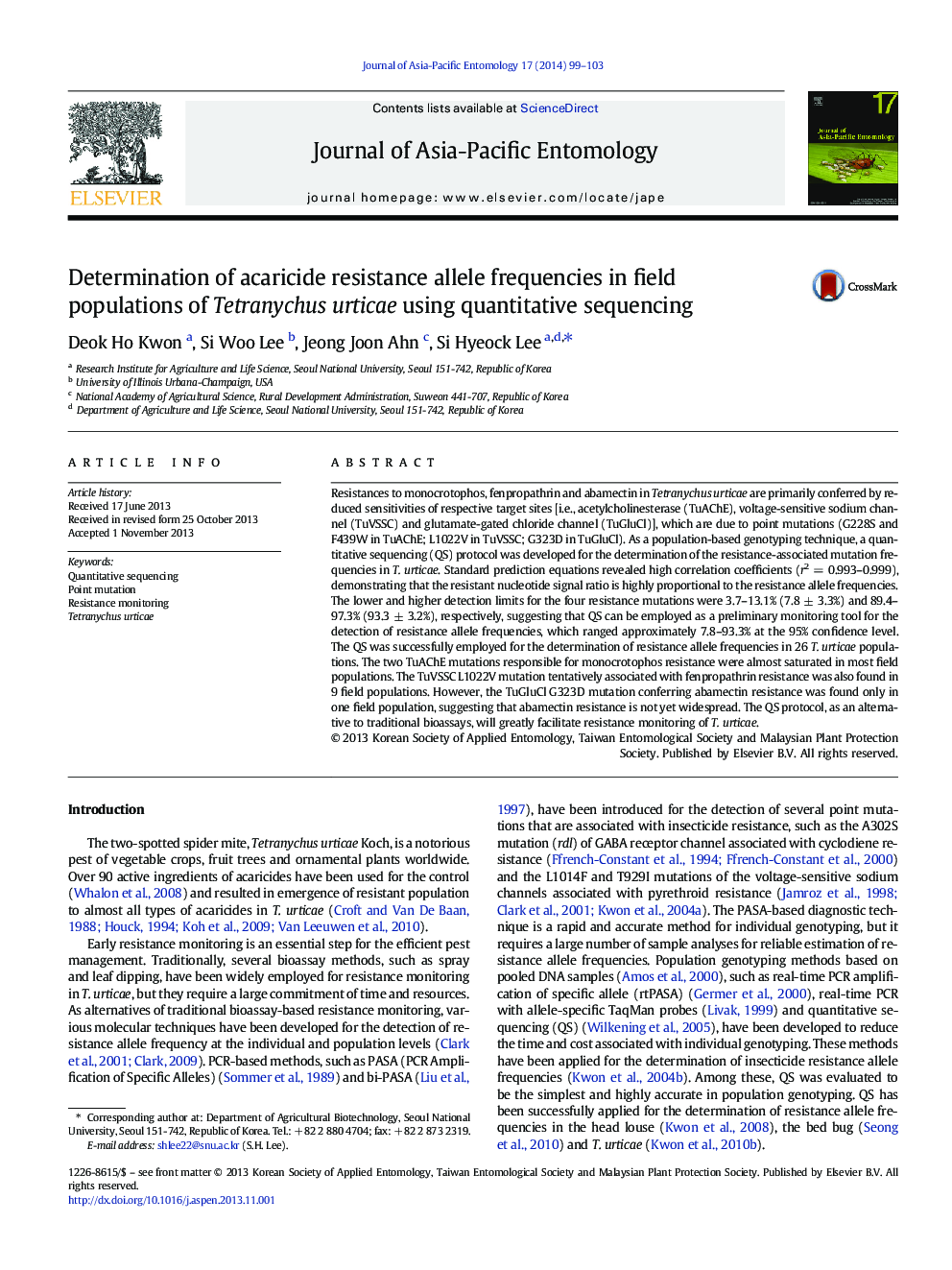| کد مقاله | کد نشریه | سال انتشار | مقاله انگلیسی | نسخه تمام متن |
|---|---|---|---|---|
| 6380189 | 1323575 | 2014 | 5 صفحه PDF | دانلود رایگان |

- QS protocol was established to determine acaricide resistance allele frequencies.
- Mutation frequencies from three acaricide resistances were measured using QS.
- Monocrotophos resistance is widespread whereas abamectin resistance was rare.
- QS would facilitate resistance monitoring as an alternative method of bioassay.
Resistances to monocrotophos, fenpropathrin and abamectin in Tetranychus urticae are primarily conferred by reduced sensitivities of respective target sites [i.e., acetylcholinesterase (TuAChE), voltage-sensitive sodium channel (TuVSSC) and glutamate-gated chloride channel (TuGluCl)], which are due to point mutations (G228S and F439W in TuAChE; L1022V in TuVSSC; G323D in TuGluCl). As a population-based genotyping technique, a quantitative sequencing (QS) protocol was developed for the determination of the resistance-associated mutation frequencies in T. urticae. Standard prediction equations revealed high correlation coefficients (r2 = 0.993-0.999), demonstrating that the resistant nucleotide signal ratio is highly proportional to the resistance allele frequencies. The lower and higher detection limits for the four resistance mutations were 3.7-13.1% (7.8 ± 3.3%) and 89.4-97.3% (93.3 ± 3.2%), respectively, suggesting that QS can be employed as a preliminary monitoring tool for the detection of resistance allele frequencies, which ranged approximately 7.8-93.3% at the 95% confidence level. The QS was successfully employed for the determination of resistance allele frequencies in 26 T. urticae populations. The two TuAChE mutations responsible for monocrotophos resistance were almost saturated in most field populations. The TuVSSC L1022V mutation tentatively associated with fenpropathrin resistance was also found in 9 field populations. However, the TuGluCl G323D mutation conferring abamectin resistance was found only in one field population, suggesting that abamectin resistance is not yet widespread. The QS protocol, as an alternative to traditional bioassays, will greatly facilitate resistance monitoring of T. urticae.
Journal: Journal of Asia-Pacific Entomology - Volume 17, Issue 1, March 2014, Pages 99-103